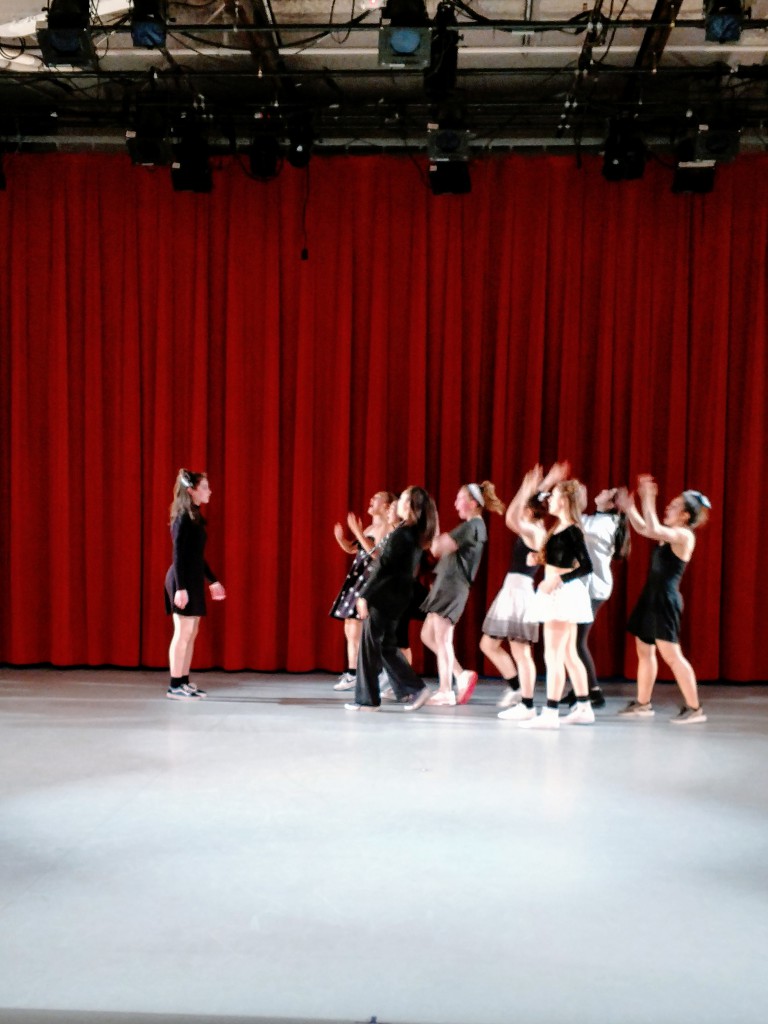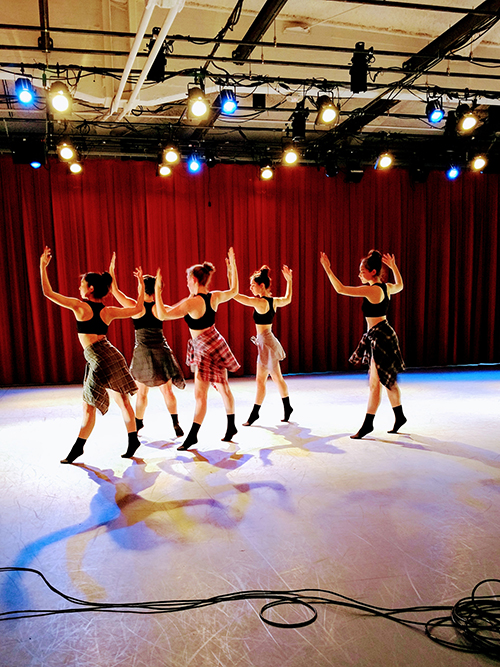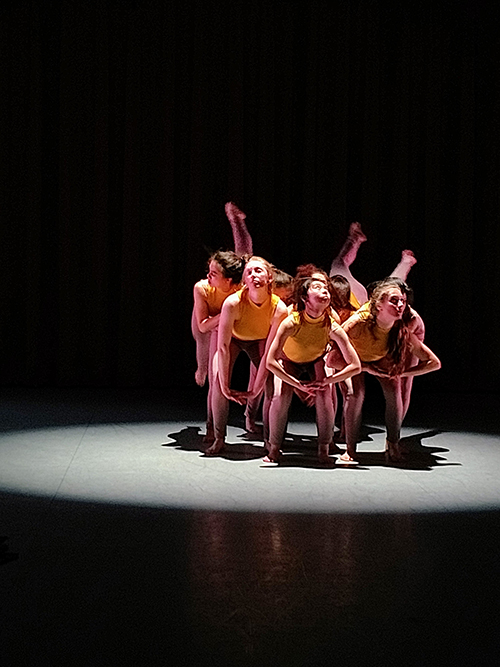Dance Costumes and Life Lessons
BY LIZ BRENT
This spring marks the anniversary of one of my longest-running costume jobs. As of April, I have worked for five years in a row with the ODC Dance Jam. From 2012 to 2017, I have costumed the teen company for the ODC School Youth and Teen Program for their annual spring performance. Here’s a bit about the Jam and my process with them:
The Dance Jam is usually comprised of between eight and 12 dancers, ranging in age from 13 to 17. Some dancers remain in the company throughout their high school careers, while others only participate for one year. Each spring, they perform a weekend-long run of repertory and new works by guest choreographers.
In December or January, I meet with Kimi Okada, the school director, to discuss the upcoming spring performance. We plan which rep costumes to pull from storage and update, what the new pieces might need, and a fitting schedule that usually spans two to three months leading up to the show weekend.
After meeting with Kimi, I contact that year’s guest choreographers: professional Bay Area dance artists who set new work on the Jam. Guest choreographers from previous years might also return to reset their work. Over the years, the Jam and I have collaborated with Kim Epifano, Scott Wells, Katie Faulkner, Dexandro “D” Montalvo and Lauren Simpson, as well as ODC’s founders Brenda Way, KT Nelson and Kimi Okada.
I gather each choreographer’s thoughts on their process and any specific details or images that might help guide the costuming. I even ask choreographers to do Google Image searches on what they like or are looking for, and send me the results. I’m always interested in themes, moods, characters, colors and, of course, the practicalities of movement styles. Are dancers rolling on the floor or involved in complex partnering? Is the movement balletic, contemporary or pedestrian? To this end, I try to see a rehearsal of the new work in person, or at least get a rehearsal video.
Then, I start researching and shopping. New works require at least two fittings with the choreographer present to allow for alterations and adjustments. I’ve gotten better at matching what a choreographer wants in the first fitting, but there have been times when multiple rounds of shopping have been required. I also aim for the maximum comfort of the performers so they can move with ease.
After rounds of fittings and alterations, time has flown, and it is the week of tech and dress rehearsals leading to the performance weekend. Occasionally, we will tweak costumes right up until the first performance, but my goal is always to have everything complete by tech. By dress, we review and practice costume quick-changes with the dancers, with emphasis on “offstage choreography” being as synchronized and as effortless as their choreography onstage. One Jam member volunteers to be the wardrobe supervisor backstage, but all the dancers are coached on caring for and being responsible for their own costumes.
This level of backstage professionalism has always impressed me. When I first started working for the ODC School, and then doing costumes for the Jam, I was also the Jam “Sister,” or admin manager and liaison between the student dancers and their families, school faculty, the Jam rehearsal master, and Ms. Okada. That first year and every year since, seeing how the Jam rises to meet the level of growth, commitment, dedication and professionalism that is expected of them, floors me.
My job titles and hours at ODC have undergone their own evolution over the past five years, but I have always worked with and costumed the Jam. I love this age group on the cusp of young adulthood, and I love giving these students the same experience I would give to a professional dance company or theatrical show. It is an opportunity to guide and teach very specific skills with broader life applications. When I danced in high school, then college, then in the larger world, I found that the high expectations of performance set the stage for habits I would use in other career venues. The basics of punctuality, team work, cleanliness and discipline are all found backstage and, paired with a high level of camaraderie and excitement, they are even more deeply ingrained.
My hope is to similarly guide the Jam dancers in good habits, regardless of whether or not they continue in the performing arts. Kimi Okada has also been a touchstone in this aspect, as well as Dexandro “D” Montalvo (the Jam rehearsal master), and the other professionals who work with the Jam each year. Our emphasis is always on the education behind the performance, as well as modeling a high level of professionalism to strive for and master.
Regardless of whether or not these dancers go on to become professionals, or pursue other studies and careers, my hope is that their experience with the Jam instills in them a sense of confidence and pride. Each year with the Jam, I am privileged to work with and costume some of the hardest working dancers I’ve known! In return, they have shown me the importance of education paired with the performance arts.
This article was also published on Liz’s blog, www.lizb.work.



